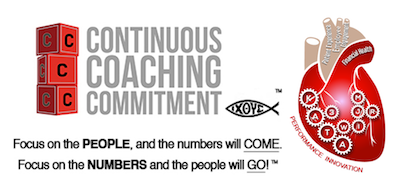When you hear Kata, the first impression you are likely to get is martial arts. While these are a set of skills used in the art of self-defense, this same discipline can be applied in a broader sense. Coaching and Improvement Kata are used to train leaders and managers and help them be more efficient in their jobs. To benefit from this strategy, you need to practice each tenet of this art until you master it. While this can take a while, after you are proficient with these tenets, you can mold them to suit your specific needs. Here are some of the ways this discipline is transforming the healthcare industry.
Improved Relationships Among Staff
A successful organization consists of staff members who have a good relationship with one another. Teamwork is important if a health institution is to carry out its goals effectively. When healthcare staff is split by ideals and modes of operation, providing proper health care is next to impossible. Most healthcare workers quit their jobs due to poor communication with their superiors. This shortage of talented and experienced workers compromises the quality of health care in the health industry. Kata involves a collection of lessons that train employees about the pitfalls they are likely to experience at the workplace and how to avoid them. It impresses upon trainees the need to treat colleagues respectfully and how management should consider different options, glean information from facts, and review results before concluding. The tenets of this discipline also impress upon managers how to increase cooperation and motivation among workers.
Presents Clear Job Instructions
When employees are given clear job instructions, they can conduct their duties effectively. The healthcare industry, like most industries, has their fair share of poorly trained employees which in turn negatively impacts the quality of healthcare. When training is conducted for the sake of it, and the real-life applications of the lessons are not highlighted, trainees tend to take such learning for granted. The training and management of healthcare employees entail applying the best training strategies. Coaching Kata has contributed to:
- Reduced length of stay (LOS),
- Flexible staff,
- Low patient errors
- Most importantly, high patient satisfaction rates
The set of skills provided by these lessons teaches coaches how to impart knowledge to learners in the clearest and accurate manner.
Better Workplace Safety
Workplace safety is of utmost importance, especially in the healthcare sector. Improper safety measures could lead to unwarranted hazards. There are many cases where health institutions are reported to be operating with poor hygiene and unattended workplace hazards. This is not only demoralizing to the staff but also reduces patient confidence in health care centers. It is important for healthcare staff to identify unsafe working conditions and devise ways of averting disasters related to recklessness and negligence. The principles of Kata, train workers how to spot potential hazards and different approaches that can be used to eliminate these hazards. The tenets of this discipline further insist on the cooperation of employees and supervisors to make the workplace safe and increase productivity.
Conclusion
Kata was originally used to ingrain specific movements for the disciplines of martial arts. Apart from being applied to martial arts, this discipline of structures practice routines has proven beneficial to many industries, the healthcare sector notwithstanding. Some of the benefits the health sector has accrued from this art include improved relationship among staff, clear job instructions, and improved safety at the workplace.








No comments yet.